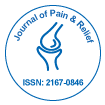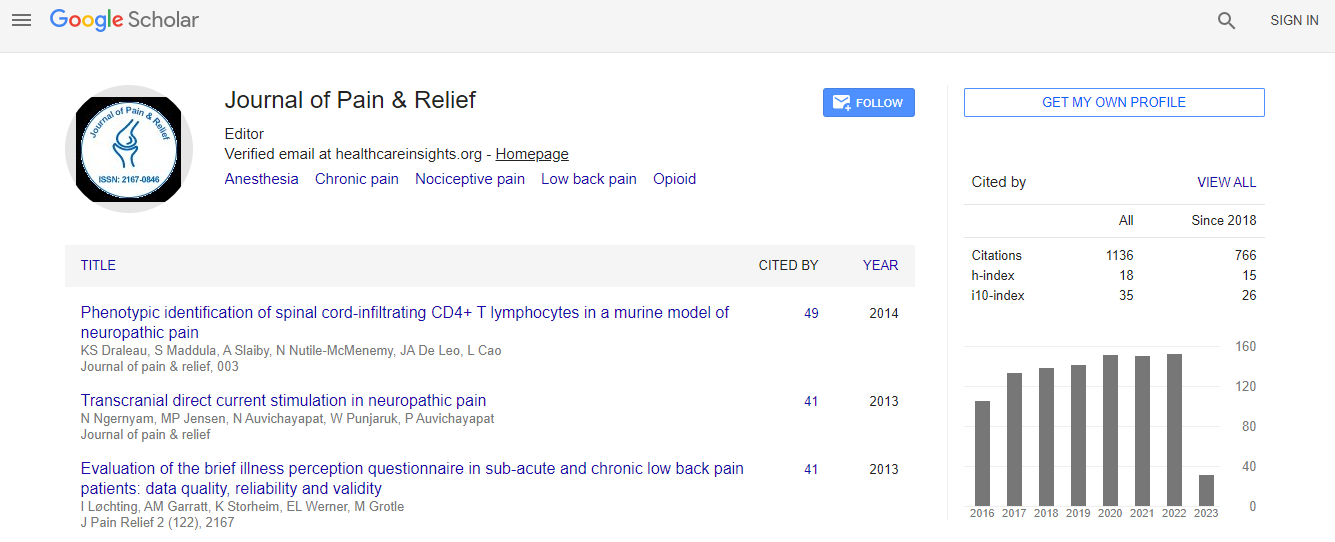Our Group organises 3000+ Global Events every year across USA, Europe & Asia with support from 1000 more scientific Societies and Publishes 700+ 91勛圖 Journals which contains over 50000 eminent personalities, reputed scientists as editorial board members.
91勛圖 Journals gaining more Readers and Citations
700 Journals and 15,000,000 Readers Each Journal is getting 25,000+ Readers
Citations : 1583
Indexed In
- Index Copernicus
- Google Scholar
- Open J Gate
- Genamics JournalSeek
- Cosmos IF
- RefSeek
- Hamdard University
- EBSCO A-Z
- OCLC- WorldCat
- Publons
- Geneva Foundation for Medical Education and Research
- Euro Pub
- ICMJE
Useful Links
Recommended Journals
Related Subjects
Share This Page
Unique pain interventions combining ablation and mechanical augmentation of painful bony tumors
International Conference on Pain Research & Management
Edgar Underwood and April Crunk
University of Alabama, USA
ScientificTracks Abstracts: J Pain Relief
DOI:
Abstract
What can be done for pain in the chronic pain or palliative patient other than oral medications? The priority for these patients has been making them as comfortable as possible. However, oral pain and transdermal medications do not always relieve pain leaving the patient with little quality of life. Is there a way to significantly reduce or even alleviate physical pain for one that has been given no alternative to pain management besides oral and transdermal medications? I believe there is. Using ablation and cementation techniques in a unique manner, help is available to patients allowing them to experience a more comfortable existence even pain free thereby improving their quality of life. 16 year old male with metastatic osteosarcoma to the lungs, multiple vertebrae and long bones with intractable back and left tibial plateau pain was selected for the study. Cryoablation and cementoplasty of lytic lesions was performed: Left pedicle and body of L1, L5 pedicle and body of T9, left tibial plateau osteoplasty. 53 year old male with metastatic breast cancer with painful right proximal femur was taken for study. Metal pin assisted cement osteoplasty of pathologic right femoral neck fracture was performed following unsuccessful partial ablation. Tibial kyphoplasty-pathologic tibial fracture using cementoplasty was performed. 75 year old female with bilateral sacral fractures with severe pain was also selected for study. Kyphoplasty was initially performed bilaterally with right sided pain relief, but continued pain on the left side despite oral pain medication and pain patch use. Further image review revealed a left pubic rami fracture for which osteoplasty was performed one week later. 53 year old male was observed with metastatic sacral chondrosarcoma with perirectal pain. Cryoablation followed by cementoplasty was performed to the presacral mass. In each case, patients received pain relief enabling them to enjoy a pain free quality of life. Modern imaging guidance allows safe and effective unique treatments for patients with pain that has failed to be controlled by conventional means.Biography
Edgar Underwood completed his Under-graduate Training at Rhodes College in Memphis, TN, and then went on to medical school at Emory University. He has been board certified in both Emergency Medicine and Radiology. He then completed his Fellowship Training in the Interventional Radiology Program at UAB. After completing his training, he served as the Chief of Emergency Medicine at Montclair Medical Center. He then moved to Princeton Baptist Medical Center where he was the Chief of Interventional Radiology. He joined the UAB Interventional Radiology section in 2006, and is now an Associate Professor. He performed the first Vertebroplasty in the State of Alabama and has given courses in both Vertebroplasty and Kyphoplasty to interventional radiologists and pain management physicians. He has a passion for teaching and is active in overseas medical missions and disaster relief performing primary care.
Email: eunderwood@uabmc.edu

